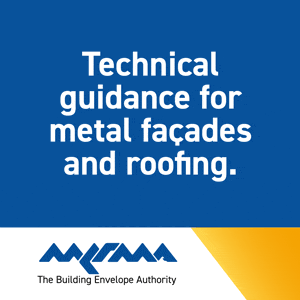In the frame for sustainable housing
- Specify & Build
- 4 days ago
- 3 min read
Focusing on the specification of the rear-ventilated façade substructure can pay dividends in achieving the higher building envelope performance targets required for sustainable housing developments, as one landmark project in Leeds demonstrates. Gary Robson, Business Development Manager at EJOT UK,explains why.
As developers pursue increased levels of thermal insulation in building envelopes, while also pushing the boundaries of architectural expression and adhering to stricter fire safety regulations, rear-ventilated façade (RVF) systems – or rainscreen cladding – are increasingly being adopted, particularly in residential schemes. The success of these systems in achieving advanced performance and design objectives, however, is highly dependent on the thermal conductivity, flexibility and integrity of the supporting substructure.
This is a factor that Citu, developer of the Climate Innovation District in central Leeds, recognised early in the design process for two large apartment buildings. It set a challenging brief to its building envelope contractor to provide an RVF with specific aesthetic goals, while also achieving exceptional levels of thermal performance.
EJOT CROSSFIX was selected for the critically important RVF substructure in what are the development’s two largest ‘volumes’, 21 and 22. Each of these buildings, named Aire Lofts and District Lofts respectively, takes the form of a multi-storey residential building up to 10 floors in height providing 194 apartments of various types.

Meeting multiple performance goals
Developed in partnership with one of Scandinavia’s leading architectural practices, White Arkitekter, and civil and structural engineers Civic, the Climate Innovation District is boosting the supply of high-quality urban housing by creating an entire new sustainable neighbourhood on a redundant brownfield site.
The design of both buildings, which has been Passive House Planning Package (PHPP) assessed, includes a steel structure with composite metal deck floors and a light gauge steel framing system. This facilitates the RVF, which features two types of Swisspearl products externally, both of which have a fibre cement composition.
At the higher levels above the ground and first floors, Swisspearl Cemsix fully compressed corrugated sheets were selected, finished in Blue Black and through-fixed using EJOT colour-matched powder coated fasteners. For the ground and first floor facades, partly in response to planning stipulations which required a secret-fix solution, Swisspearl Carat panels were specified with a contrasting 7090 Ivory finish to demarcate the duplex apartments.
The entire façade of District Lofts was constructed by Hansen Facades using CROSSFIX, in conjunction with main contractor Artium Construction. The system was selected following its successful deployment on Aire Lofts, where its versatility and effectiveness were first recognised by Citu for attaching the secret-fix panels.
The EWS1 (External Wall System 1) rating of the facades for both volumes meant that the materials used in their construction, inclusive of specified attachments, had to be A1 ‘non-combustible’, signifying the best possible rating with minimal fire risk. These fire safety objectives also had to be balanced with thermal and ventilation goals.

Given the high thermal requirements, the substructure cavity had to be sufficiently deep to accommodate Rockwool Duo-Slab insulation with a thickness of 250mm and maintain the required ventilation for a system of this type. The deep layer of insulation was one of the most important façade components needed for both buildings from a thermal perspective, but CROSSFIX was instrumental too.
The facades had to meet a weighted U Value (based on a typical subframe arrangement) of 0.13W/m²k, which was key to delivering on the developer’s commitment to providing homes with heating energy demand around five times lower than the average UK house.
A sustainable façade enabler
The CROSSFIX substructure specified for Aire Lofts and District Lofts consisted of a 220mm Konsole K1 in A2 stainless steel, complete with the Powerkey for enhanced structural stability in the same metal grade, supporting L, Z and T profiles.
EJOT completed the package with five types of its stainless steel fasteners to provide secure assembly with consistent performance. In addition to the JT3-6, JT6-2 and JT4-6 self-drilling fasteners, EJOT’s specialist screw for fixed point and sliding point applications, the JT9-2 E14 Vario was used, as well as an in-house powder coated version of the JT3.
One of the reasons why CROSSFIX contributed to creating the highly insulated façade was its stainless steel composition. As this type of metal has very low thermal conductivity, it minimises the potential for thermal bridging, making it the ideal choice to meet the façade’s demanding performance target.
This material benefit, coupled with a thermal stop incorporated into the CROSSFIX Konsole, meant that the facade’s U-value is actually lower than it would have been if other types of substructures had been used with the same thickness of insulation.
In addition, CROSSFIX also provided whole life cycle advantages. This is due to the system being formed mainly of recyclable stainless steel which requires significantly less energy to manufacture compared with many other RVF substructure systems – confirmed by an Environmental Product Declaration.
A smart solution
The multiple sustainability benefits provided by CROSSFIX, enhanced further through the ‘non-flammable’ fire resistance rating of the system and a unique design flexibility that enables it to be used in both horizontal and vertical assembly, means it is well-aligned with the higher efficiency, safety and quality targets demanded in today’s construction market.
In addition, at the Climate Innovation District, valuable efficiency benefits were also provided to the on-site team because CROSSFIX does not require special or handed brackets in areas of the façade where space is limited, such as locations between windows and other openings. The versatility of the substructure also meant that one subframe system could be used for both the secret-fix and face-fixed cladding.
.png)





























































.png)

